- Home
- Alison Weir
Life of Elizabeth I Page 19
Life of Elizabeth I Read online
Page 19
The Council accused de Quadra of spreading the story of the secret marriage, but he denied that he had done so, declaring that he was only sorry he could not inform anyone that the Queen was married.
By the spring of 1562, the Countess of Lennox and her son, Lord Darnley, had been released from house arrest in London and received back into favour by the Queen. But Lady Lennox was a woman of powerful ambitions, and it was not long before she resumed her intrigues to marry Darnley to Queen Mary, thereby uniting two claims to the English throne, a prospect that had already alarmed Elizabeth considerably. This time, however, the Countess went too far, for her plans hinted at the deposition of the Queen. Her plotting was soon uncovered, and for her suspected treasonable designs she was arrested and sent to the Tower.
In May, after months of frustrating negotiations, Mary sent Maitland back to England with instructions to procure an invitation for her to make the proposed state visit soon. Elizabeth told Maitland that there was now nothing to delay her meeting with his sovereign, whereupon a jubilant Mary wrote to the Duke of Guise, 'You can think how astonished others will be when they see us, the Queen of England and me, according so well!'
Unfortunately, a religious war between Catholics and Huguenots had just erupted in France, prompting Sir Nicholas Throckmorton and Robert Dudley to urge Elizabeth to offer full support for the oppressed Huguenots, who might in return be able to assist her towards the recovery of Calais, a fulfilment of one of her dearest dreams. Throckmorton warned her that a meeting with the Catholic Mary, a relation of the Guises, would be impolitic at this time.
Mary was dismayed when she heard that the project might be abandoned, but Elizabeth was reluctant to become embroiled in a foreign civil war and resolutely insisted on going ahead with the meeting, arguing that many benefits would result from it. Her Council, however, when ordered to finalise plans for the state visit, strongly advised her not to meet with Mary at present because to do so would only identify her with, and so strengthen, the Guise cause, bringing further suffering to the French Protestants who she should be succouring. But Elizabeth was obstinate. Unless Throckmorton' her otherwise, she declared, 'go she would' to meet Mary, and that was an end to the matter.
Preparations for the visit were set in train, although unseasonably wet weather that rendered the roads impassable held things up. Not surprisingly, someone - Sir Henry Sidney - 'groaned and lamented' in an urgent letter to Throckmorton, pointing out that only he could dissuade the Queen from her disastrous purpose, and begging him to use his persuasive powers to good effect. But before Throckmorton could respond, the religious conflict in France ended in an uneasy peace on 25 June, and the way was left clear for the two queens to meet.
Two weeks later Elizabeth and Maitland discussed the final plans for Mary's visit, which would take place at York, or another northern city convenient to the Scots Queen, between 20 August and 20 September, and Maitland then hastened north to acquaint Mary with the details. In York, the civic authorities were already buying in vast stores of provisions to meet the needs of the two royal retinues, and plans were made for a series of tournaments, whilst courtiers on both sides of the border ordered new clothes, most of them grumbling at the expense.
Six days later, Throckmorton sent an urgent message to inform the English government that, despite Catherine de' Medici's efforts to preserve the peace, civil war had broken out again in France. This time Elizabeth knew she could not allow the Huguenot leaders, the Prince de Conde and Admiral de Coligny, to be thrown to the wolves without intervening to help them. She had been dismayed to hear that Mary was actively encouraging her Catholic relations to overthrow the Huguenots, and on 15 July, she reluctantly dispatched Sir Henry Sidney to Scotland to inform the Scots Queen that her visit must be postponed for a year. The effect on Mary, who had nurtured great hopes of the meeting, was to cause her to take to her bed and remain there weeping all day, only rallying when Sidney managed to convince her that Elizabeth was as disappointed as she was.
Unlike Elizabeth, Mary had definitely resolved to marry, preferably a powerful Catholic prince who would intimidate Elizabeth into revising the Treaty of Edinburgh in Mary's favour. Elizabeth was aware of her intentions, and they caused her the gravest concern, since the Queen of Scots' attraction lay not only in her present status, but also in her expected future inheritance. If Mary were to marry a prince of the royal houses of Spain, Austria or France, Elizabeth would have the Catholic threat brought right to her back doorstep, her chief fear being that Scotland might then be used as a springboard for an invasion of England.
Elizabeth had therefore decided to use her subtle powers of persuasion to influence Mary to take a less dangerous husband, one preferably of Elizabeth's own choosing. She had even suggested to Maitland that Mary might marry a member of the English aristocracy, but he had dismissed that idea, saying that his sovereign would never consider any match that might diminish her reputation.
In fact, Mary had set her sights on Don Carlos, Philip II's heir, whom she had heard described at the French court as a brave and gallant prince, but who was, in reality, a sadistic degenerate who suffered epileptic fits. She was not interested in Charles IX - he was too young - nor in the Archduke Charles of Austria - he was too poor.
Elizabeth, of course, had no desire to see Mary married to the heir to Catholic Spain, and warned Mary that, if she went ahead with it, she, Elizabeth, would ever afterwards be her enemy. 'Consider well your steps,' was her advice; if Mary chose a husband agreeable to the English, Elizabeth would be her good friend for life.
Two months later, Elizabeth signed a treaty pledging her assistance to the Huguenots, who in return placed their port of Newhaven (later renamed Le Havre) in English hands as surety for the future restoration of Calais, which they hoped to wrest from their enemies.
Elizabeth's patriotic sentiments had been fired by the prospect of recovering Calais, and in October 1562, she gave orders for the mustering of a force of six thousand men, whose commander was to be Ambrose Dudley, Earl of Warwick; they were to sail to Newhaven and Dieppe and reinforce the Huguenot armies in the region.
However, before she could give the order for her soldiers to leave for France, the Queen fell so dangerously ill that her life was despaired of.
Chapter 8
'Without a Certain Heir'
Smallpox was exceptionally virulent during the early years of Elizabeth's reign, and in the early 1560s reached epidemic form, seeming to single out 'aged folks and ladies': the Countess of Bedford and hundreds of lesser folk had recently succumbed to it. Smallpox was a dreaded disease, not only because it was life-threatening, but also because those who did survive it were often left horribly disfigured. Thomas Randolph described the early symptoms as being 'a pain in their heads that have it, and a soreness in their stomachs with a great cough'.
Queen Elizabeth was at Hampton Court when, on 10 October 1562, she first felt unwell. Believing, as many did then, that it would effect a cure, she immersed herself in a bath, then took a bracing walk outdoors; as a result, she caught a chill. Within hours, she had taken to her bed, running a high temperature.
Dr Burcot, a respected but irascible German physician, was summoned to examine her. He diagnosed smallpox, but there were no spots, and the Queen dismissed him for a fool. No eruptions appeared, which many believed betokened the onset of a serious attack, and a day or so later the fever grew worse. By 16 October she was very ill indeed, first becoming incapable of speech and then lapsing into an unconscious state in which she remained for twenty-four hours. The royal doctors, fearing that her death was imminent, sent urgently for Cecil to come down from London.
The next night, Elizabeth drifted in and out of consciousness as the crisis approached, and there was a hurried convening of an anxious Privy Council, whose members were all panic-stricken over the unresolved matter of the succession. If the Queen died, as most believed she would, who should succeed her? Over the next few days there were urgent discussions, wi
th the councillors, according to de Quadra, divided in their opinions: extreme Protestants favoured Lady Katherine Grey, while moderates supported the Earl of Huntingdon, who had no near blood relationship to the Queen. The rest wanted the judiciary to determine the matter. Not one spoke in support of Mary, Queen of Scots. But a consensus was lacking, which hinted at deep divisions and boded ominously for the future.
As the court prepared to go into mourning, Lord Hunsdon persuaded a reluctant Dr Burcot - some said at the point of a dagger - to resume his treatment of the Queen. Following a curative measure first used by the Arabs and recommended by the English medieval physician John of Gaddesden, Burcot ordered that she be wrapped in red flannel, laid on a pallet beside the fire, and given a potion of his devising. Two hours later, Elizabeth was conscious and able to speak.
Fearfully, the councillors gathered around her bedside. She was aware that she was dangerously ill - 'Death possessed every joint of me,' she told a parliamentary delegation soon afterwards - and her chief concern was to make provision for the government of England after her death. Turning in extremis to the one man she felt she could trust, she commanded the councillors to appoint Robert Dudley Lord Protector of England, with the magnificent salary of 20,000 per annum. She also asked that his personal servant, Tamworth, who slept in his room, be given a large pension of 500 per annum. Many people thought, then as now, that this was to buy the silence of one who had stood guard while the Queen and Dudley were alone, but Elizabeth, anticipating that adverse conclusions would be drawn, declared 'that, although she loved and always had loved Lord Robert dearly, as God was her witness, nothing unseemly had ever passed between them'. It is hardly likely that one who believed she would shortly be facing divine judgement would have lied over such a matter.
Although the councillors were much dismayed by her commands, 'everything she asked was promised', for nobody wished to distress her with any arguments, since she was 'all but gone', but, according to de Quadra, 'it will not be fulfilled'. It was obvious that the appointment of Dudley as Lord Protector could only provoke a bitter power struggle.
Shortly afterwards, Dr Burcot entered the royal bedchamber with some medicine, and it was at this point that Elizabeth groaned as she noticed that the first red eruptions of smallpox had appeared on her hands.
'God's pestilence!' swore the doctor at his august patient. 'Which is better? To have a pox in the hand, or in the face, or in the heart and kill the whole body?' The spots, he told the anxiously hovering councillors, were a good sign, and indicated that the worst was over. Soon, the pustules would dry out, form scabs and fall off.
From then onwards, to the profound relief of the Council and her subjects at large, Elizabeth improved rapidly - Randolph wrote that she was in bed for six days only - but it had been a near thing, and her grateful subjects issued a coin to mark her recovery. Her brush with Death, 'the blind Fury with the abhorred shears', brought home to them as nothing else could that only her life, which could be snuffed out at any time, stood between peaceful, stable government and the uncertainties of a disputed succession, which could easily lead to civil war. The scare left both councillors and Members of Parliament determined to force the Queen to marry and provide the country with an heir without further dithering or fruitless prolonging of courtships and diplomatic negotiations.
Throughout her illness, Elizabeth had insisted that only her favourite ladies attend upon her, and none nursed her more devotedly than her friend, Lady Mary Sidney, wife of Sir Henry, and sister to Dudley. But while the Queen's pockmarks eventually faded, Lady Mary caught the dreaded smallpox and emerged from it so hideously scarred that she never appeared publicly at court again. Sir Henry Sidney was abroad throughout her illness, and later wrote, 'When I went to Newhaven, I left her a full, fair lady, in mine eyes at least the fairest, and when I returned, I found her as foul a lady as the smallpox could make her, which she did take by continual attendance on Her Majesty's most precious person. Now she lives solitary.'
Elizabeth remained friends with Mary Sidney, being truly sorry for her tragedy, and would visit her privately at Penshurst Place in Kent, the Sidney country seat. On the rare occasions when Mary could be persuaded to come to court, she remained in her apartment, and the Queen, abandoning royal precedent and etiquette, visited her there.
As for Dudley, who had very nearly become the ruler of England, on 20 October Elizabeth, having just settled on him a pension of#11000 per annum, finally made him a Privy Councillor; in order to preserve the peace, she bestowed the same honour upon his rival, Norfolk. Although the rivalry between the two men remained as intense as ever, they were now displaying in public a 'close intimacy'. As for Dudley, he was to prove a faithful and diligent councillor, attending more meetings than most right up to the end of his life.
By 25 October, Elizabeth had resumed her normal duties, but she was aware that certain demands would undoubtedly be made of her by Parliament: the mood in the country and the Council left her in little doubt of public feeling. She therefore tried to stall when it came to summoning Parliament, but her councillors were not prepared to suffer her delaying tactics. In November, weeping with rage, she had a furious confrontation with her former suitor Arundel, who stood his ground and defended the right of her lords to interfere in the matter of the succession, which touched the whole country. Later that month, Elizabeth, who needed the money that it could vote, had no choice but to summon Parliament.
When Elizabeth's second Parliament met on 12 January 1563, its members were determined to have the question of the succession settled once and for all. The matter was first raised when, during the opening ceremonies, Alexander Nowell, Dean of St Paul's, at Dudley's behest, castigated the Queen for failing to marry.
Just as Queen Mary's marriage was a terrible plague to all England, so now the want of Queen Elizabeth's marriage and issue is like to prove as great a plague. If your parents had been of like mind, where had you been then?' he asked the Queen. 'Alack! What shall become of us?' Elizabeth never spoke a friendly word to him again.
But the Lords and Commons were unanimous in supporting Nowell, and soon afterwards agreed that lovingly-worded petitions from both Houses should be submitted to Her Majesty, urging her to marry or designate a successor, for 'thereby shall she strike a terror into her adversaries and replenish her subjects with immortal joy'. Cecil supported the petitions, but not openly - 'The matter is so deep I cannot reach into it,' he wrote. 'God send it a good issue!'
Both petitions were couched in humble terms, reminding Elizabeth of the terror felt by her subjects during her illness and warning her what might ensue if she died without naming her successor: 'the unspeakable miseries of civil wars, the perilous intermeddlings of foreign princes, with seditions, ambitions and factious subjects at home, the waste of noble houses, the slaughter of people, subversion of towns, unsurety of all men's possessions, lives and estates', attainders, treasons and a host of other calamities.
We fear a faction of heretics in your realm, contentious and malicious Papists. From the Conquest to the present day, the realm was never left as now it is without a certain heir. If Your Highness could conceive or imagine the comfort, surety and delight that should happen to yourself by beholding an imp of your own, it would sufficiently satisfy to remove all manner of impediments and scruples.
Elizabeth always took the view that neither her marriage nor the succession were the business of her subjects, but matters for herself alone, yet she could not afford to alienate Parliament, and therefore resorted to deliberate obfuscation and procrastination. After din.ier on 28 January, she graciously received the delegation from the Commons in the gallery at Whitehall Palace. The Speaker, on his knees, presented the Commons's petition, which she 'thankfully accepted' and then delivered 'an excellent oration' in which she assured him and his fellows that she was as worried as they were about the succession, and had been especially so since her illness. She won sympathy by confiding that the matter had occupied her mind con
stantly as she recuperated. 'Yet desired I not then life so much for my own safety as for yours.'
She laboured, she told them, under an intolerable burden. They were asking her to name a successor, but she could not wade into so deep a matter without weighty deliberation and was more concerned about choosing the right claimant. If her choice led to civil war, her subjects might lose their lives, 'but I hazard to lose both body and soul', she said, being responsible to God for her actions.
It was not their place, she admonished, to petition her on this matter, but she knew the difference between men who acted out of love and loyalty and those who were mischief-makers. She did not wish to hear them speak of her death, for she knew now, as well as before, that she was mortal. She would, she promised, take further advice, and then give them an answer.
'And so I assure you all', she concluded, 'that though after my death you may have many stepdames, yet shall you never have a more natural mother than I mean to be unto you all.'
Two days later she received the deputation from the Lords with their petition, in which they urged her to marry 'where it shall please you, to whom it shall please you, and as soon as it shall please you'. Even if she chose Robert Dudley, he would be better, they felt, than no husband at all. Failing this, they begged her to name her successor, since 'upon the death of princes the law dieth'. The Lords were anxious to have Mary Stuart's claim disposed of: they did not, 'as mere, natural Englishmen', wish to be 'subject to a foreign prince', and Mary was 'a stranger, who, by the laws of the realm, cannot inherit in England'. According to Sir Ralph Sadler, who served four Tudor sovereigns, 'the stones in the streets would rebel' at the prospect of Mary ruling England.

 Richard III and the Princes in the Tower
Richard III and the Princes in the Tower Britain's Royal Families: The Complete Genealogy
Britain's Royal Families: The Complete Genealogy The Lady in the Tower: The Fall of Anne Boleyn
The Lady in the Tower: The Fall of Anne Boleyn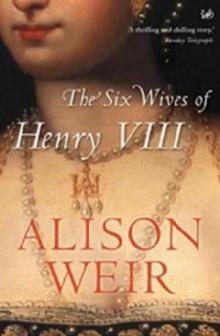 Six Wives of Henry VIII
Six Wives of Henry VIII Elizabeth of York: A Tudor Queen and Her World
Elizabeth of York: A Tudor Queen and Her World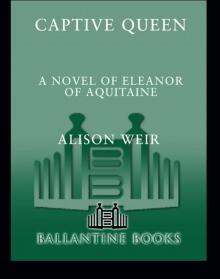 Captive Queen
Captive Queen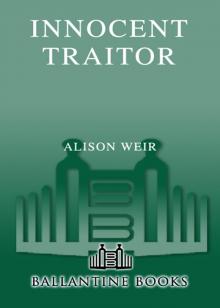 Innocent Traitor
Innocent Traitor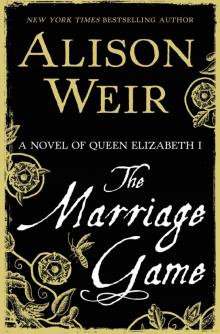 The Marriage Game
The Marriage Game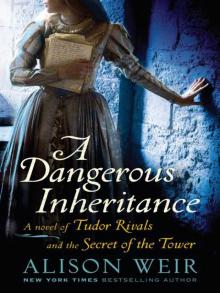 A Dangerous Inheritance
A Dangerous Inheritance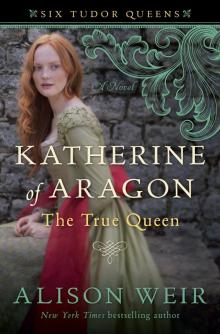 Katherine of Aragón: The True Queen
Katherine of Aragón: The True Queen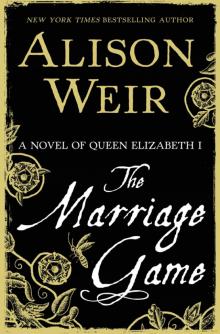 The Marriage Game: A Novel of Queen Elizabeth I
The Marriage Game: A Novel of Queen Elizabeth I Princes in the Tower
Princes in the Tower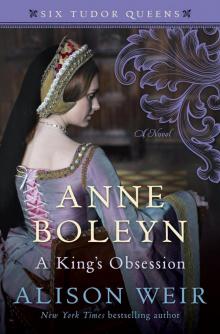 Anne Boleyn: A King's Obsession
Anne Boleyn: A King's Obsession Traitors of the Tower
Traitors of the Tower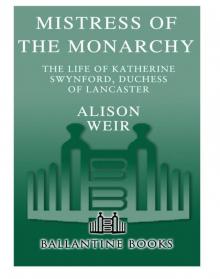 Mistress of the Monarchy: The Life of Katherine Swynford, Duchess of Lancaster
Mistress of the Monarchy: The Life of Katherine Swynford, Duchess of Lancaster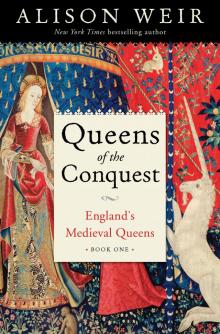 Queens of the Conquest: England’s Medieval Queens
Queens of the Conquest: England’s Medieval Queens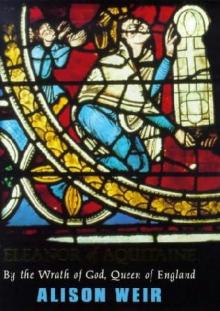 Eleanor of Aquitaine: A Life
Eleanor of Aquitaine: A Life Mary, Queen of Scots, and the Murder of Lord Darnley
Mary, Queen of Scots, and the Murder of Lord Darnley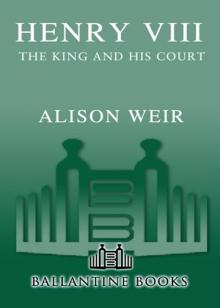 Henry VIII: The King and His Court
Henry VIII: The King and His Court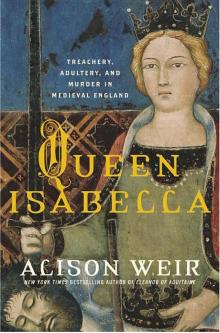 Queen Isabella: Treachery, Adultery, and Murder in Medieval England
Queen Isabella: Treachery, Adultery, and Murder in Medieval England Katheryn Howard, the Scandalous Queen
Katheryn Howard, the Scandalous Queen Arthur- Prince of the Roses
Arthur- Prince of the Roses The Wars of the Roses
The Wars of the Roses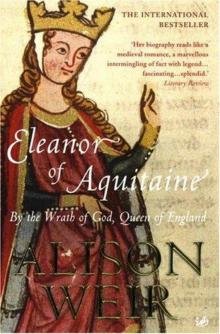 Eleanor of Aquitaine: By the Wrath of God, Queen of England
Eleanor of Aquitaine: By the Wrath of God, Queen of England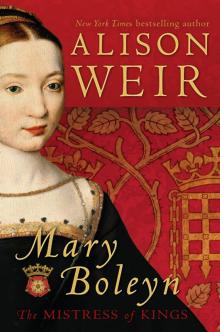 Mary Boleyn: The Great and Infamous Whore
Mary Boleyn: The Great and Infamous Whore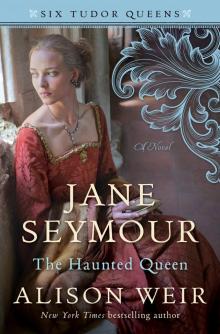 Jane Seymour: The Haunted Queen
Jane Seymour: The Haunted Queen Anna of Kleve, the Princess in the Portrait
Anna of Kleve, the Princess in the Portrait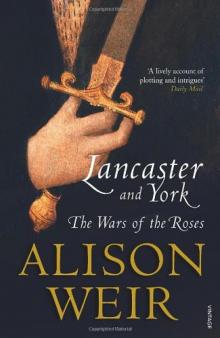 Lancaster and York: The Wars of the Roses
Lancaster and York: The Wars of the Roses The Grandmother's Tale
The Grandmother's Tale The Princess of Scotland (Six Tudor Queens #5.5)
The Princess of Scotland (Six Tudor Queens #5.5)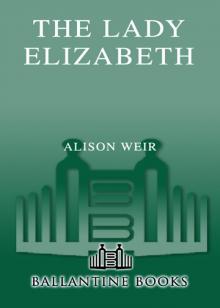 The Lady Elizabeth
The Lady Elizabeth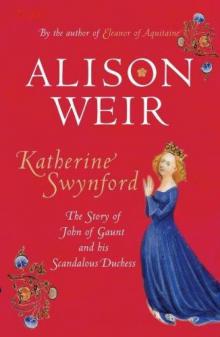 Katherine Swynford: The Story of John of Gaunt and His Scandalous Duchess
Katherine Swynford: The Story of John of Gaunt and His Scandalous Duchess The Curse of the Hungerfords
The Curse of the Hungerfords The Lost Tudor Princess: The Life of Lady Margaret Douglas
The Lost Tudor Princess: The Life of Lady Margaret Douglas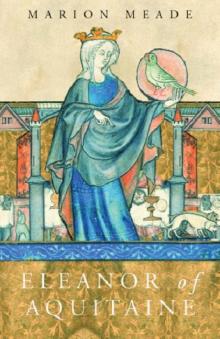 Eleanor of Aquitaine
Eleanor of Aquitaine Mistress of the Monarchy
Mistress of the Monarchy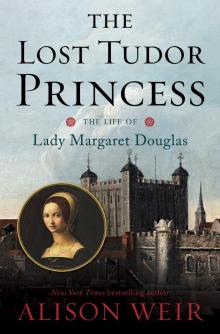 The Lost Tudor Princess
The Lost Tudor Princess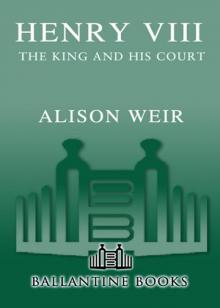 Henry VIII
Henry VIII Anne Boleyn, a King's Obsession
Anne Boleyn, a King's Obsession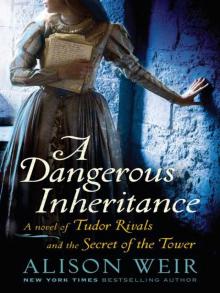 A Dangerous Inheritance: A Novel of Tudor Rivals and the Secret of the Tower
A Dangerous Inheritance: A Novel of Tudor Rivals and the Secret of the Tower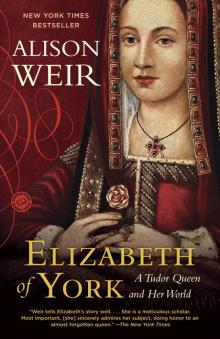 Elizabeth of York
Elizabeth of York Katherine of Aragon, the True Queen
Katherine of Aragon, the True Queen Katherine Swynford
Katherine Swynford Wars of the Roses
Wars of the Roses Queens of the Conquest
Queens of the Conquest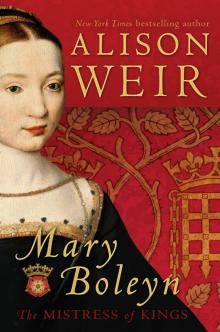 Mary Boleyn
Mary Boleyn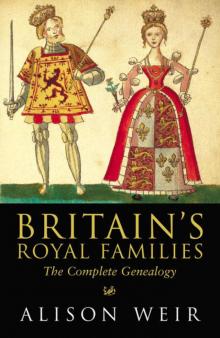 Britain's Royal Families
Britain's Royal Families The Tower Is Full of Ghosts Today
The Tower Is Full of Ghosts Today Life of Elizabeth I
Life of Elizabeth I Anne Boleyn A King's Obssession
Anne Boleyn A King's Obssession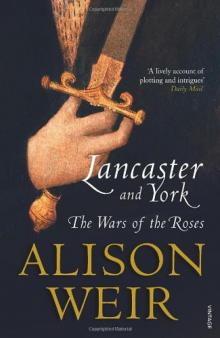 Lancaster and York
Lancaster and York Jane Seymour, the Haunted Queen
Jane Seymour, the Haunted Queen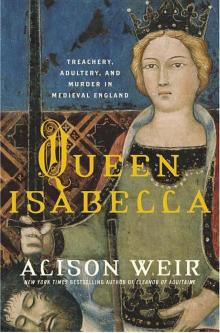 Queen Isabella
Queen Isabella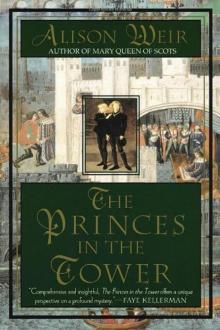 The princes in the tower
The princes in the tower